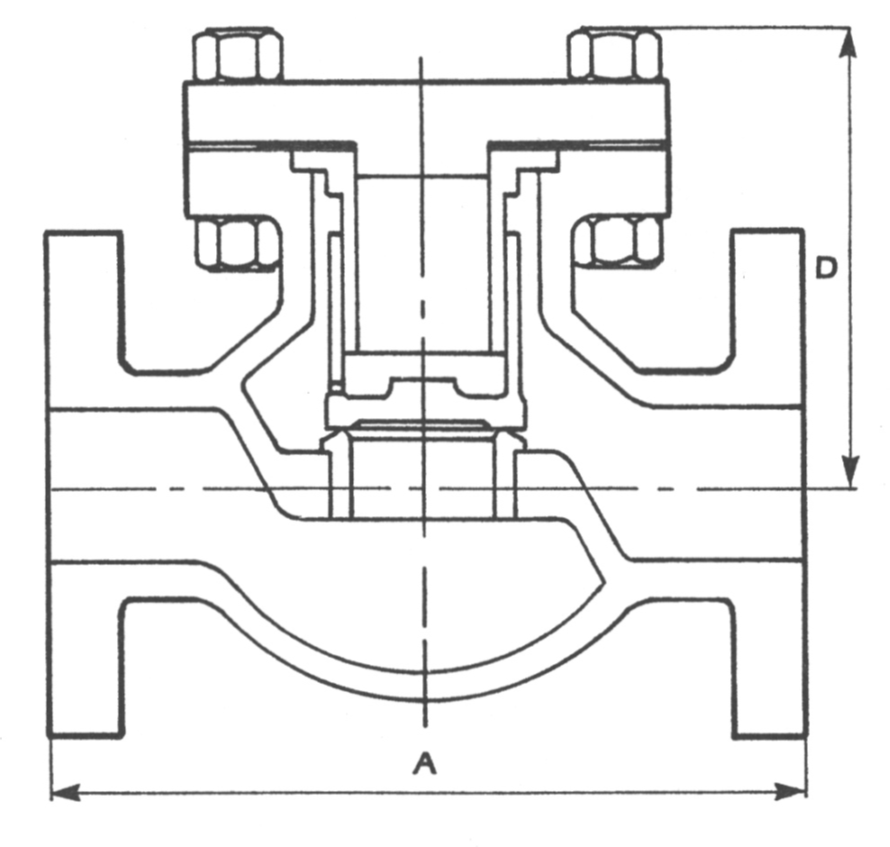Introduction
A check valve, also known as a non-return valve (NRV) or one-way valve, is a critical component in fluid systems used to prevent reverse flow. Its main function is to allow fluid (liquid or gas) to flow freely in one direction while automatically closing to stop backflow when the direction changes.
Check valves are widely used in industrial, commercial, and residential systems where backflow could lead to equipment damage, contamination, or system inefficiency.
A check valve is a mechanical device that permits fluid to flow in one direction only, automatically preventing reverse flow or backflow without the need for manual intervention or external power.
How Does a Check Valve Work?
A check valve operates based on pressure differential across its inlet and outlet. When the pressure on the upstream side (inlet) is greater than the downstream side (outlet), the valve opens. If the flow attempts to reverse, the pressure change causes the internal mechanism to shut, blocking the return.
Common check valve mechanisms include:
- Disc: A spring-loaded or free-floating disc moves to open or close the flow.
- Ball: A ball seals against a seat to prevent reverse flow.
- Swing: A hinged disc swings open with forward flow and closes with backflow.

Types of Check Valves
Choosing the right type depends on fluid type, pressure, system orientation, and application environment. Below are the most common types:
1. Swing Check Valve
- Mechanism: Hinged disc swings open and closes by gravity or backpressure.
- Best For: Water and wastewater systems, horizontal flow lines.
- Pros: Simple, cost-effective, low-pressure drop.
2. Lift Check Valve
- Mechanism: Disc lifts vertically when flow begins and drops back when flow stops.
- Best For: High-pressure systems, steam and oil lines.
- Pros: Better sealing, compact design.
3. Ball Check Valve
- Mechanism: A ball moves within the valve body and seals against a seat.
- Best For: Thick fluids, slurry, and viscous systems.
- Pros: Self-cleaning, minimal maintenance.
4. Dual Plate (or Wafer) Check Valve
- Mechanism: Two spring-loaded plates rotate inward to allow flow and snap back to prevent backflow.
- Best For: HVAC systems, space-limited pipelines.
- Pros: Compact, low cracking pressure.
5. Diaphragm Check Valve
- Mechanism: Flexible diaphragm flexes open under pressure.
- Best For: Chemical and pharmaceutical systems.
- Pros: Corrosion-resistant, hygienic.
Applications of Check Valves
Check valves are used globally in various industries to ensure safe and efficient fluid control:
Water & Wastewater
- Prevent contamination and backflow in pipelines.
- Maintain clean separation between potable and non-potable systems.
Oil & Gas
- Protect compressors and pumps from damage due to reverse flow.
- Ensure directional integrity in high-pressure, hazardous systems.
HVAC Systems
- Maintain consistent flow and prevent cyclical back pressure.
- Improve energy efficiency by reducing pump strain.
Chemical Processing
- Prevent mixing of reactive or hazardous fluids.
- Enable directional flow in multi-chemical pipelines.
Power Generation
- Integral in cooling, fuel, and feedwater systems.
- Provide operational safety in steam turbines and boiler lines.
Image Placeholder: “Insert example image of check valves in action across different industries (e.g., HVAC, oil & gas, water treatment).”
Key Considerations When Selecting a Check Valve
- Fluid Type: Is it gas, liquid, slurry, or corrosive fluid?
- Flow Rate & Pressure: Match cracking pressure and system specs.
- Material Compatibility: Stainless steel, brass, PVC, or exotic alloys.
- Orientation: Horizontal or vertical installation?
- Space Constraints: Compact valves may be needed in tight installations.
Maintenance and Performance Tips
- Regular Inspection: Check for noise, leakage, or clogging.
- System Flushing: Periodically remove debris and sediment.
- Valve Testing: Conduct flow and leak tests after maintenance.
- Replacement Timing: Replace valves when showing signs of fatigue, seal damage, or excessive wear.
Summary: Why Check Valves Matter
Check valves are essential for fluid system integrity. From preventing backflow contamination in water systems to protecting multimillion-pound pumps in industrial environments, their value is unmatched.
Whether you’re specifying valves for a power station, hospital, or home boiler system, selecting the right check valve is key to long-term reliability and safety.
Frequently Asked Questions (FAQs)
What is the difference between a check valve and a non-return valve?
They are the same—both terms refer to a valve that allows flow in only one direction and prevents reverse flow.
Do check valves need power to operate?
No, check valves operate automatically based on pressure differential and do not require external power.
Can check valves fail?
Yes—due to wear, debris, improper installation, or incompatible fluid. Regular maintenance minimises risk.
Where should a check valve be installed?
Typically near pumps, upstream of sensitive equipment, or where backflow risk exists.
Need a Check Valve for Your Project?